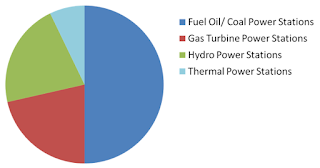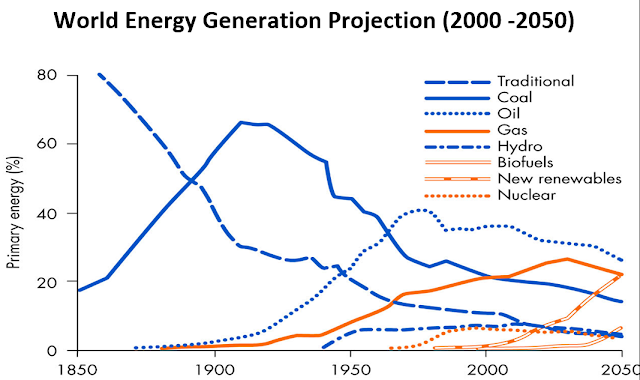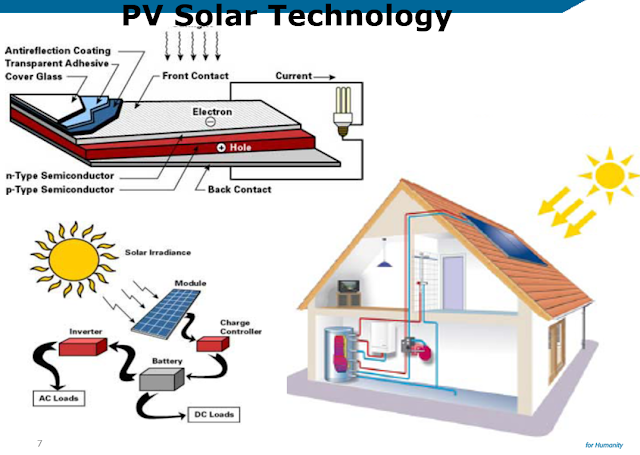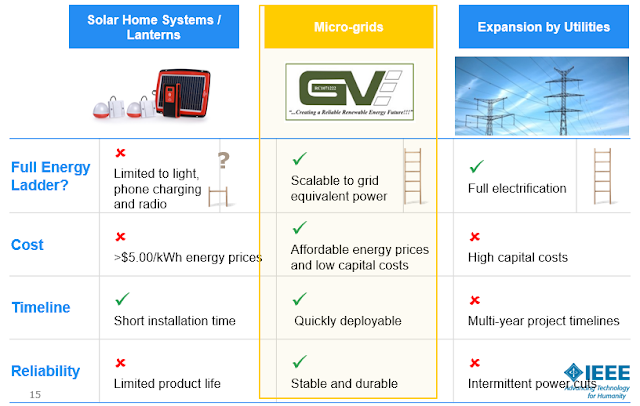This article explains explicitly, how Photo-voltaic (PV) Systems can be used to either replace or supplement Hydroelectricity in Nigeria and other countries. It also explains how to integrate, build or set up PV solar systems in houses offices and industries.
Article Content
• Introduction• Power Sector Review
• PV Solar technology
• Basic Components
• Applications
• Recent Trends
• Prospects
• Case Studies
• Challenges
• Conclusion
• Q & A
Click the link to download the PDF copy of this article for free: INTEGRATING PHOTOVOLTAIC (PVC) SYSTEMS AS AN ALTERNATIVE ENERGY SUPPLY IN NIGERIA: PROSPECTS AND CHALLENGES
See Also: How to Implement Control Systems
Power Generating Plants in Nigeria
The pie-chart in the figure below shows the proportion of various oil producing plants in Nigeria.

Current Capacity: June, 2015:
i. Generation: 3,981.30MWii. Peak Demand Forecast: 15,000
Fuel Oil/ Coal Power Stations
• Egbin Electric Power Business Unit,• Afam Electric Power Business Unit,
• Delta Electric Power Business Unit,
• Shiroro Electric Power Business Unit,
• Jebba Hydro Power Station,
• Shiroro Hydro Power Business Unit,
• Kainji Hydro Power Station
Gas Turbine Power Stations
• Afam, Sapele and Delta PowerHydro Power Stations
• Jebba, Kainji & ShiroroThermal Power Station
• Egbin
Energy Consumption indices of various Nations (Electricity consumption per Capital).
The chart below shows the summary of the electricity consumption for various nations:
The chart below shows the summary of the electricity consumption for various nations:

World Energy Generation Projection (2000 -2050)
The chart below shows the projected world energy generation project between 2000 to 2050:
“Nigeria
has the opportunity to a cleaner path than oil and can create a renewable
energy path that lead to great investments and job opportunities in the power
sector…It is also important that as a young, developing nation, Nigeria should
protect its environment by taking full advantage of renewable energy and become
a pacesetter in renewable energy in Africa.”
- Bill Richardson, Former United
States’ Secretary for Energy

PV Solar Technology
The figure below shows the PV technology and how it can be harnessed.
Small – Medium Scale Applications
The various small to medium scale applications of PV Solar Technology are shown in the figure below.
Large Scale Applications
The various large scale applications of PV Solar Technology are shown in the figure below.
Recent Trends
• Efficiency
19.5 poly crystalline
35.8% Triple-Junction Technology
43.5% Multi-Junction Concentrator Cells
• Growth
• Growth
2013 – 139GW 38% (up from 40GW in 2010)
(Germany – 36GW; China – 20GW; USA – 10GW)
• Economics
• Economics
Reduced Cost: $76.67 in 1977 - $0.70 in 2014
Flexible Financing Mechanisms (PPA, Leases, etc.)
Attractive Incentive Structure (F.I.T, Tax breaks, Subsidies, etc.)
• Forecast
• Grid Expansion Complexities
• Long life span
• Flexible maintenance plan.
• Environmentally friendly.
• Decline in cost with improved R&D.
• Improved Efficiency and Reliability
• Easy Installation and Expansion
• Increasing Renewable Energy F.D.I
• Forecast
Prospects
• Relative Availability (122PetaWatts)• Grid Expansion Complexities
• Long life span
• Flexible maintenance plan.
• Environmentally friendly.
• Decline in cost with improved R&D.
• Improved Efficiency and Reliability
• Easy Installation and Expansion
• Increasing Renewable Energy F.D.I
Skypower 3GW
Power Africa $2.1GW
Canadian & German Governments


Enormous potential for growth in the Sub-Saharan Africa power sector
The chart below gives the summary of the percentage of Africa’s population without electricity.
• 600M people without power = 100M connections
• 40% addressable by private utilities = 40M connections
• $4B – $7B annual market opportunity
• Poor/ unrealistic Government Incentive Scheme
• Uncoordinated Regulation & Policies
• Sabotage
• Poor Awareness
• Unprofessional Practices
• Lack of Skilled Manpower
• Poor Data Management
This solution will provide basic electricity to about 200houses in a community. Being modular, it can be easily scaled in-line with electricity demand per community. Revenue collection through prepaid metering will ensure a 42-months investment payback period.
• 40% addressable by private utilities = 40M connections
• $4B – $7B annual market opportunity
Challenges Facing PV Solar Technology
• High Initial Cost• Poor/ unrealistic Government Incentive Scheme
• Uncoordinated Regulation & Policies
• Sabotage
• Poor Awareness
• Unprofessional Practices
• Lack of Skilled Manpower
• Poor Data Management
GVE’s Rural Electrification Solution
1. 25kW Centralized Mini-Grid SolutionThis solution will provide basic electricity to about 200houses in a community. Being modular, it can be easily scaled in-line with electricity demand per community. Revenue collection through prepaid metering will ensure a 42-months investment payback period.

2. 250W Standalone Solar Home System Solution
This standalone home solution will provide the basic electricity to about of a single home in a typical rural community. Being modular, it can be easily scaled in-line with client’s electricity demand increases. Revenue collection through a Pay-As-You-Go model will ensure a 42-months investment payback period.
This standalone home solution will provide the basic electricity to about of a single home in a typical rural community. Being modular, it can be easily scaled in-line with client’s electricity demand increases. Revenue collection through a Pay-As-You-Go model will ensure a 42-months investment payback period.

3. Micro-grids are the Optimal Solution to Electrify Africa

By: Ifeanyi B. Orajaka
Email: info@gve-group.com @ifeanyiorajaka
Website: www.gve-group.com
Click Here to see a more detailed article on how to build Integrated Photo Voltaic Systems at www.wbdg.org.
Click Here to see a more detailed article on how to build Integrated Photo Voltaic Systems at www.wbdg.org.
See Also: How to Implement Control Systems
Hope you learnt a lot from this article? Comment below if you have any
confusion. Don’t forget to share this article with your friends. Also subscribe
to get our latest posts.
Click the link to download the PDF copy of this article for free: INTEGRATING PHOTOVOLTAIC (PVC) SYSTEMS AS AN ALTERNATIVE ENERGY SUPPLY IN NIGERIA: PROSPECTS AND CHALLENGES





















No comments:
Post a Comment
WHAT'S ON YOUR MIND?
WE LOVE TO HEAR FROM YOU!